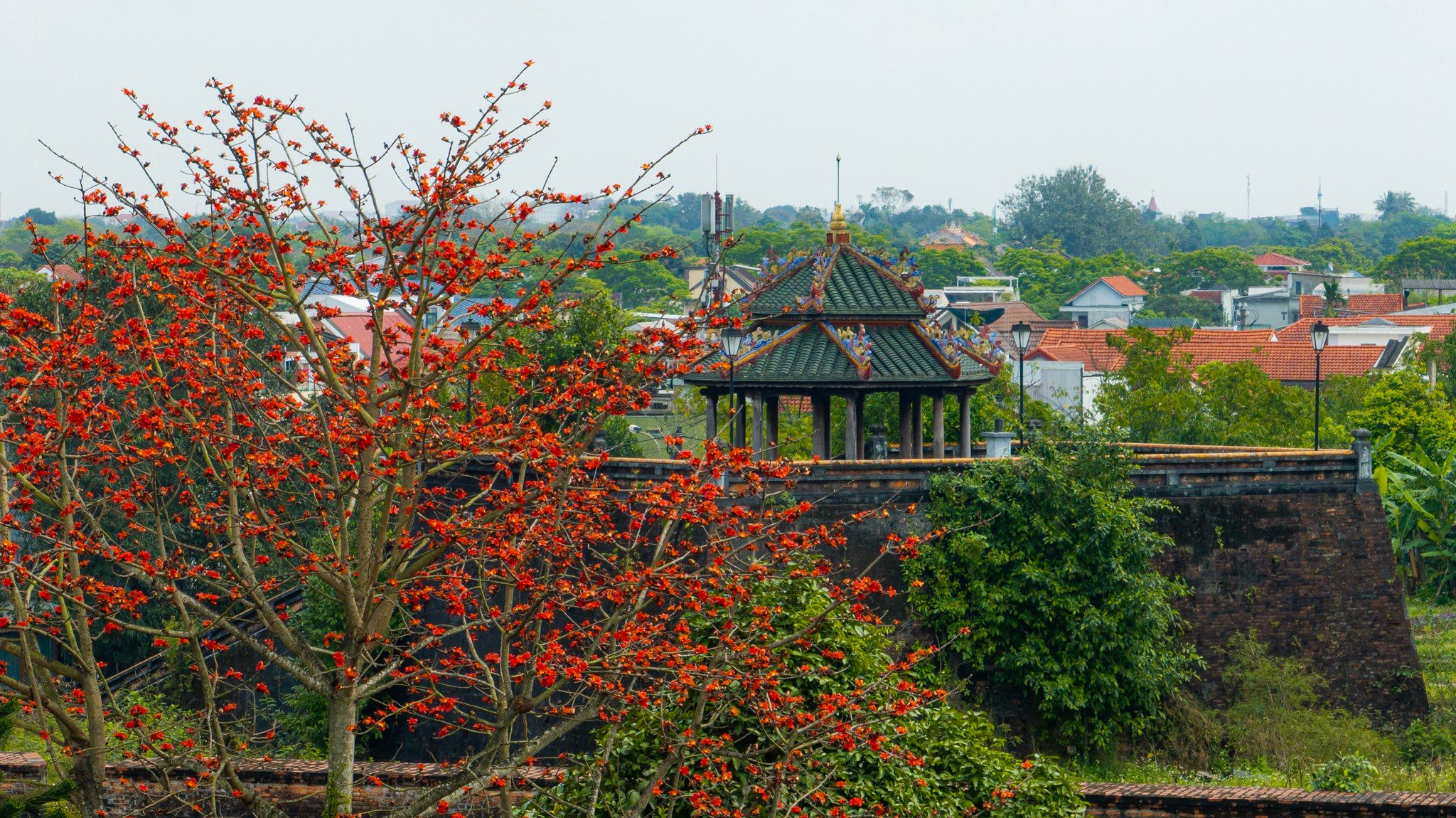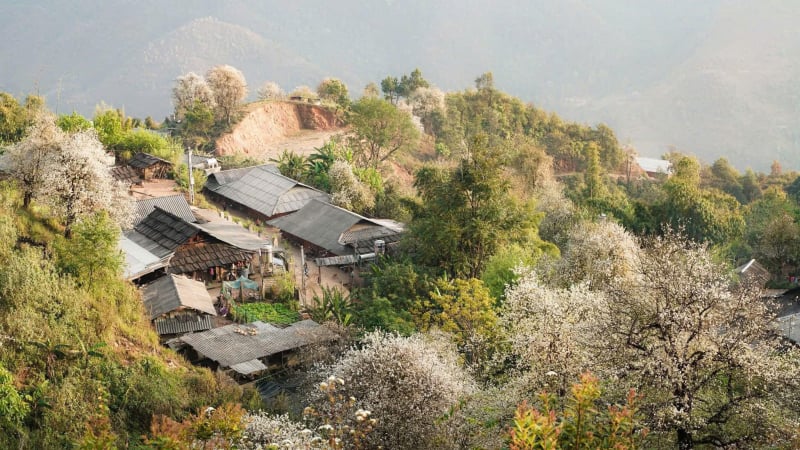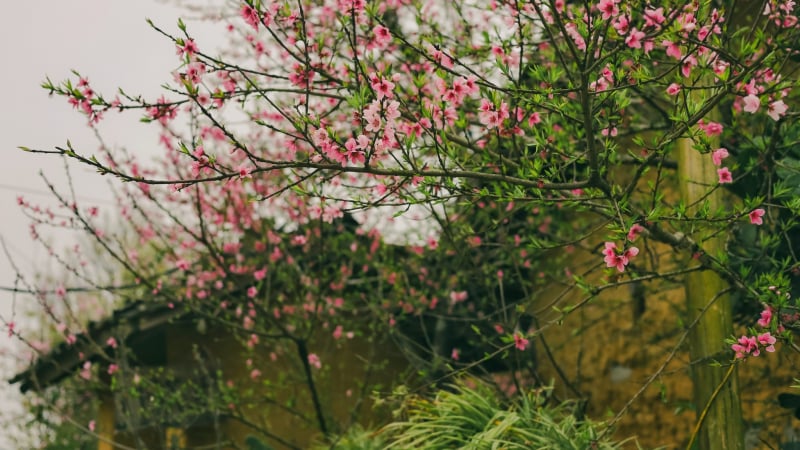March fireflies fly out
When the cotton flowers fall, plant sesame seeds.
The clusters of bright, sparkling, red cotton flowers are like flickering "flames" on the bare branches, stretching out against the blue sky. The whole space seems to be lit up and warmed by the red color of this typical flower.
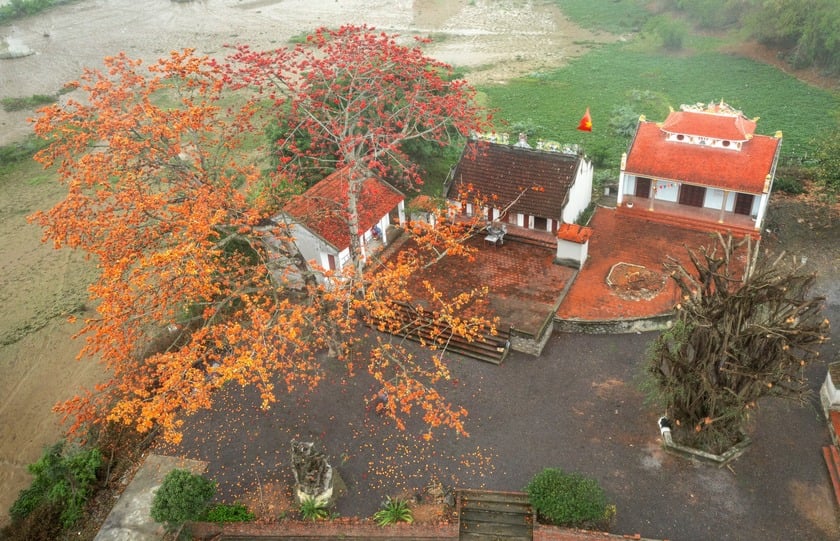
In late spring, the capricious cold spells rush in suddenly as if to chase away the cold and welcome the summer sun. After months of leafless hibernation, when other trees sprout, grow leaves and then flower, the kapok tree has a very special “reverse process”. Only when the flowers bloom will the new buds sprout, and when the flowers fall, the green leaves will turn green and spread shade. The flowers bloom like a fire on the country roads, on the banks of village ponds, on the dikes…

As spring is about to pass, the sun begins to shine brighter, it is also the time when the cotton flowers begin to bloom, adding to the poetic beauty of Hue City.
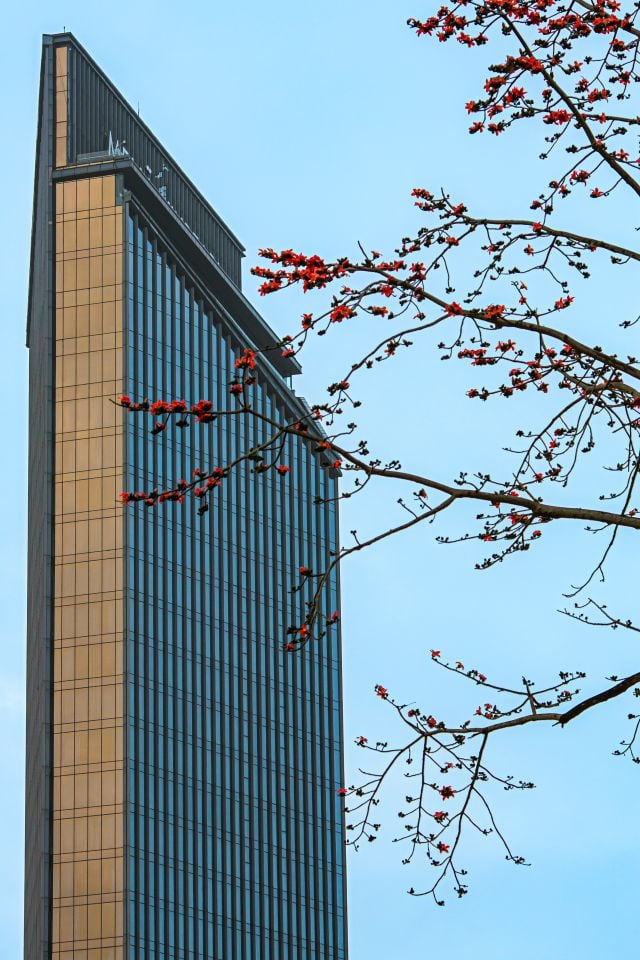
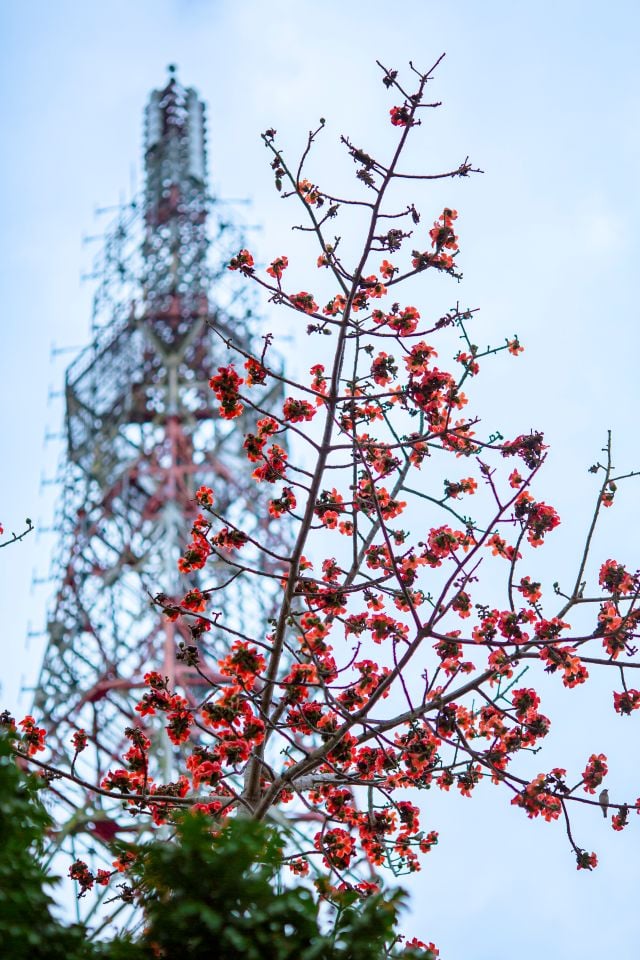
The special thing about this flower is that it does not grow close together, but blooms bright red at the same time. 5 large and thick petals spread out from a cylindrical tube, the pistil is long thread, like small sparks. Even if it is just a single kapok tree in a corner, its tall and majestic shape and bright red flowers are like a tower of fire in the blue sky.
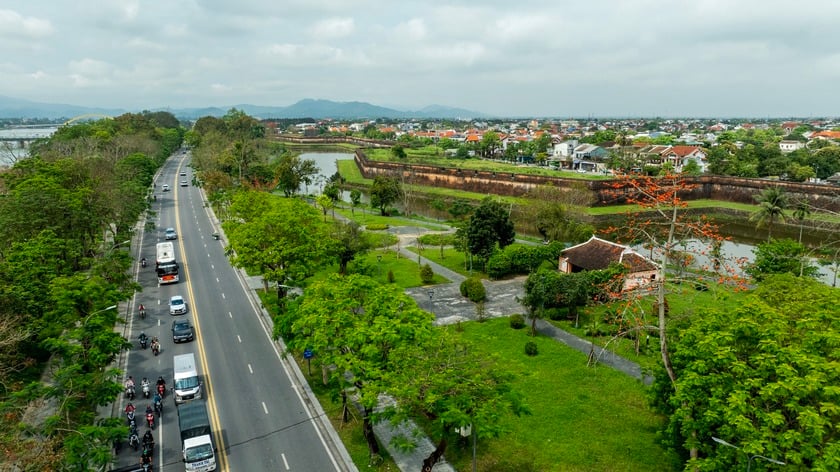
In mid-March, many kapok trees bloom bright red on street corners, exciting locals and tourists.
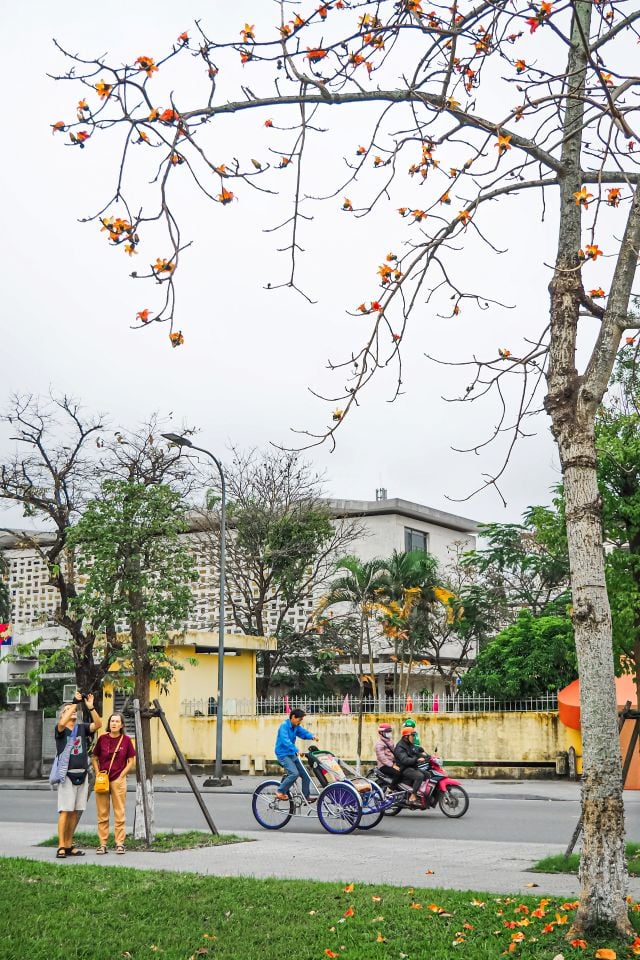
That flower chose the exact time of March, the month of the lean season, to bloom, to burn, to call the crested mynah and the fan palm to gather among the green color of the young rice, to contain the desire for fullness of farmers in the midst of famine. The season of the cotton tree flowers lasts nearly a month, bringing a beautiful natural scene, making people's hearts flutter. When the cotton tree flowers fade, the red petals gradually fall, giving way to the fresh green buds.
In the heart of the dreamy city of Hue, right at the poetic Da Vien bridge area, the brilliant red cotton trees are blooming, showing off their captivating red color. Four ancient cotton trees, carefully cared for by the Hue Green Park Center, grow strong, towering between heaven and earth, like giant torches lighting up the entire sky.


Kapok trees usually shed all their leaves in winter, leaving only colorful flowers when they bloom.

The cotton tree flower is also known by many different names, such as cotton tree, po lang, each name has its own beauty and meaning. The cotton tree flower blooms in bright red clusters, standing out against the blue sky, creating a vibrant natural picture. This flower is grown in many provinces and cities in the North, and is considered a very familiar flower in the childhood memories of many people.
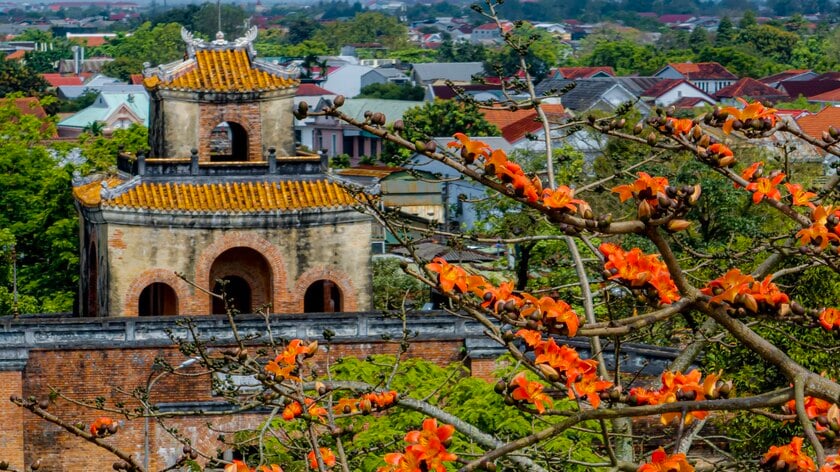
The red cotton flowers, with their brilliant red color and delicate petals, exuding a gentle fragrance, have become an indispensable part of Hue's natural picture every spring and summer.
Perhaps, there are few plants that choose a precarious, solitary place to take root, spread branches and bloom like the kapok tree. It is the dike, the riverbank where is originally “deserted land” to take root. Birds drop seeds without choosing a specific day and place, and then, in the sun and rain, the kapok tree silently gathers its life sap from the barrenness, without anyone fertilizing or caring for it, sprouting, thorns along the trunk to protect itself and to stretch out its branches and spread its canopy.

In the heart of the ancient Hue citadel, where the poetic Perfume River meanders, hides a unique architectural work, bearing a strong historical and cultural mark: Quan Tuong Dai. This is not only the only remaining ancient observatory in Vietnam, but also a living testament to the scientific and technical level and aesthetic thinking of the ancient Vietnamese.
Quan Tuong Dai, located in Thuan Hoa ward, Hue city, was built during the Nguyen dynasty, a dynasty that left a deep mark in Vietnamese history. Every spring, when the cotton trees around Quan Tuong Dai bloom together, the whole sky seems to be lit up by a brilliant red color. The cotton tree canopies spread out like giant umbrellas, protecting the ancient architectural work. The red color of the cotton flowers contrasts with the green of the leaves and the quiet gray of Quan Tuong Dai, creating a beautiful, vibrant natural picture.
In the middle of the vast alluvial plains or precariously along the slope of the road to the rocky plateau or alone in the middle of the field, there are always the shadows of the cotton trees spreading their canopies. Those cotton trees are not only a point to mark the way back in the luggage of those who travel far away.The cotton tree flowers at the temple entrance wave forever to those far from home" as in Hoang Cam's poem, but also the shade that covers the hard-working farmers, who lie prone to avoid the scorching sun pouring down in the middle of summer, and the place to rest every time they stop working. The cotton tree just exists, alone, rough, thorny in the middle of the green, so that every March, when the village festival drums sound, the whole space of the rice explodes with red.
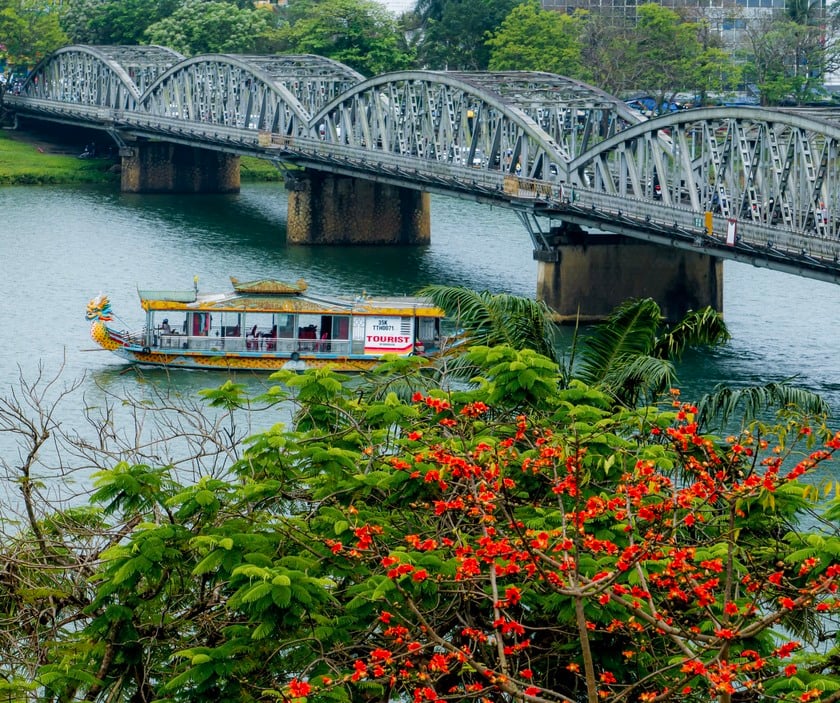
The blooming of the cotton flowers not only attracts Hue people, but also tourists. Every year, around March, many tourists from all over come to Hue to admire this flower season.
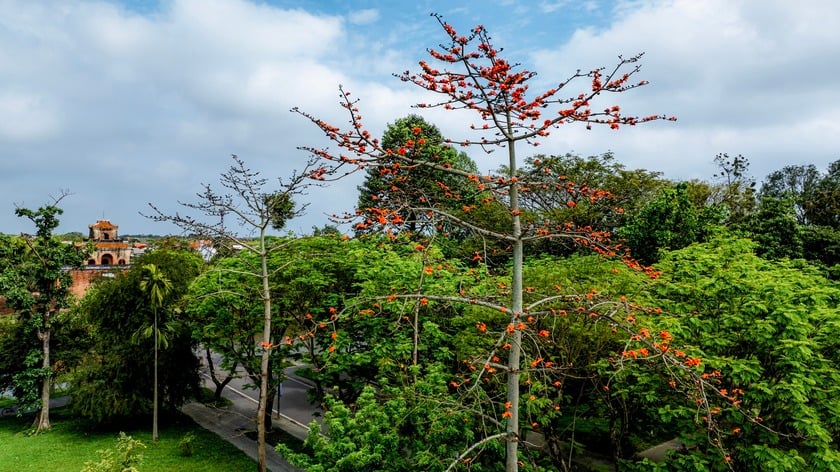
The kapok flowers in this season not only attract the eyes of people, but are also an ideal resting place for birds. Small birds with colorful feathers fly around the kapok flowers, looking for sweet drops of nectar. The chirping of birds, combined with the rustling of the wind, creates a melodious, peaceful melody.
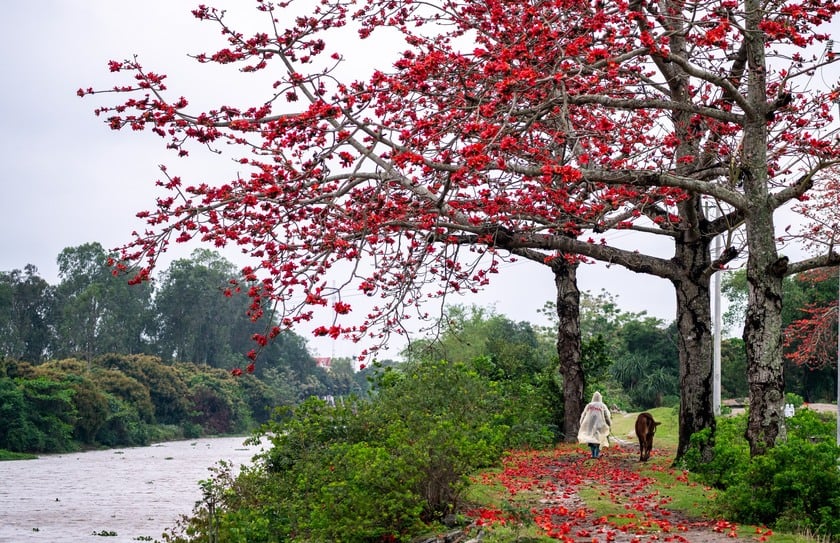
Especially on weekends, when the weather is warm, is when the cotton flowers bloom most brilliantly.
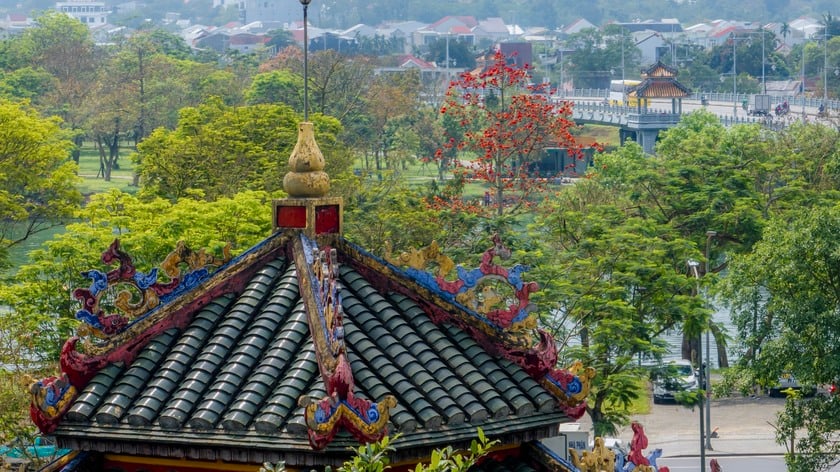
When mentioning the season of cotton flowers, in everyone's mind immediately appears the image of warm spring weather, gentle golden sunlight spreading across the roads. The appearance of cotton flowers is not only a sign of spring, but also a sign of a new crop, a new beginning full of hope. It is the time when people start preparing for farming work, for bountiful harvests on the green fields.
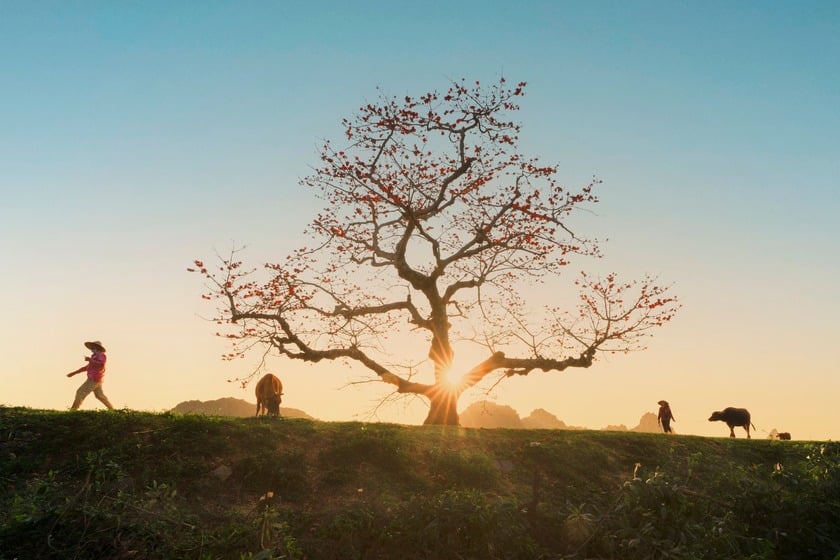
Not planted as much as in other provinces and cities, the royal poinciana trees in Hue grow alone but when they bloom, they are brilliant thanks to the inherent beauty of this city.

In the treasure trove of folk songs and proverbs of the nation, there is a saying: "When will March come - The cotton flowers fall down, the old woman puts away her blanket". The appearance of the red cotton tree not only brings beauty to the natural landscape, but is also an indispensable part of the cultural and spiritual life of the Vietnamese people. The red cotton tree is not only a flower, but also a symbol of life, of renewal and of hopes for a bright future.





